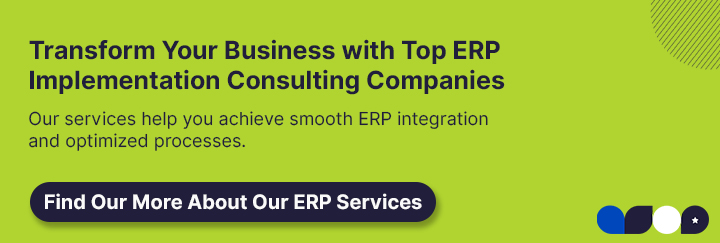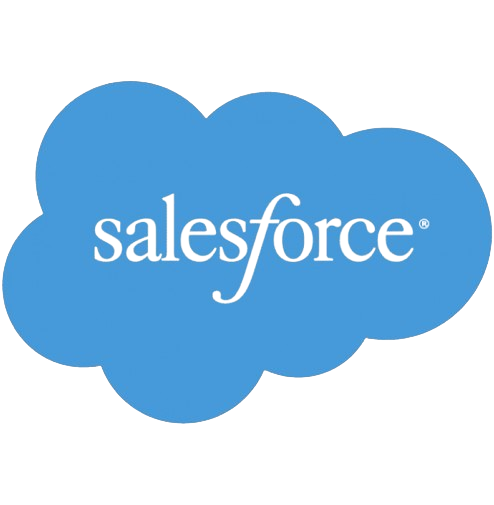Salesforce Integration with SAP: Key Benefits, Challenges & Best Practices
Updated on December 27, 2025
In today’s connected business environment, integrating Salesforce with SAP, is crucial for unifying customer-facing and back-office operations. This integration streamlines sales, marketing, and customer service with supply chain, finance, and inventory management, enabling seamless data flow and significant efficiency gains worldwide. However, improper setups often cause data inconsistencies that impact many projects.
What is Salesforce-SAP Integration?
Salesforce-SAP integration links Salesforce’s CRM functions with SAP’s ERP capabilities through bidirectional data synchronization without manual input. Common integration tools include API-based connections via MuleSoft and SAP Cloud Integration, automating processes like quote-to-cash between SAP S/4HANA and Salesforce Sales Cloud.
>> Related Post: Top Salesforce Marketing Cloud Implementation & Consulting Companies
Key Benefits of Salesforce-SAP Integration
The synergy of Salesforce and SAP unlocks a range of benefits that empower businesses to operate more efficiently and deliver exceptional customer experiences.
1. Holistic Data Visibility
By creating a unified view of customer and operational data, this integration eliminates information silos that often hinder decision-making. Sales teams can access real-time SAP inventory or pricing data directly within Salesforce, ensuring they provide accurate information to customers.
2. Streamlined Operational Workflows
Automating processes like quote-to-cash or order processing reduces manual tasks, freeing teams to focus on strategic priorities. This efficiency transforms how departments collaborate, from sales to logistics.
3. Smarter Decision-Making
With real-time analytics from integrated data, businesses gain deeper insights into market trends and operational performance. This enables more accurate forecasting and resource allocation.
4. Elevated Customer Experiences
Seamless data flow allows businesses to deliver personalized, responsive service. By integrating Salesforce cases with SAP logistics, companies can provide customers with real-time updates on order status or delivery schedules, fostering trust and loyalty.
5. Cost Efficiency
By minimizing manual errors and redundant data entry, SAP Salesforce integration reduces operational costs, allowing businesses to allocate resources to growth initiatives.
6. Robust Compliance and Security
Integrated systems, when properly configured, ensure data security and compliance with regulations like GDPR and CCPA. By using secure APIs and encryption, businesses can protect sensitive information.
7. Scalability for Future Growth
The integration supports growing data volumes and user bases, enabling businesses to scale without overhauling systems.
8. Accelerated Return on Investment
By streamlining processes and reducing implementation timelines, businesses can realize value faster. A utility provider, for example, might see revenue growth after integrating sales and supply chain data, enabling quicker responses to market demands.
>> Related Post: Guide to SAP Implementation Process, Costs, and Best Practices in 2025
Navigating Challenges in Salesforce-SAP Integration
While the rewards of Salesforce SAP integration are significant, the process is not without hurdles. Understanding these challenges and their solutions is critical for a successful implementation:
1. Complex Data Mapping
Aligning Salesforce fields like “Opportunity” with SAP’s “Sales Order” can lead to errors if not carefully managed, as mismatched data disrupts workflows.
2. System Compatibility Issues
Older SAP systems may not integrate seamlessly with cloud-based Salesforce, resulting in integration delays. Upgrading to SAP S/4HANA or leveraging a trusted partner’s expertise in hybrid setups can resolve compatibility concerns, ensuring smooth data flow.
3. Data Security and Compliance Risks
Transferring sensitive data between systems increases the risk of breaches or regulatory violations. Implementing Salesforce Shield and SAP’s encryption protocols, ensuring compliance with GDPR, CCPA, and other standards, and safeguarding data integrity.
4. Ongoing Maintenance Demands
Updates to Salesforce or SAP can disrupt integration connections, requiring continuous monitoring. API monitoring tools to help proactively address these issues and maintain system reliability.
5. Budget Overruns
Excessive customization can inflate costs, straining resources. Phased rollouts, guided by strategic planning, help manage budgets while delivering incremental value.
6. User Adoption Barriers
Without proper training, teams may struggle to adopt the integrated system, which can reduce its effectiveness.
>> Related Post: Scaling Your Business with 5 CRM Best Practices in 2025
Salesforce SAP Integration Best Practices
To achieve a seamless SAP and Salesforce integration, businesses should follow these Salesforce SAP integration best practices, informed by industry-standard approaches:
1. Establish Clear Objectives
Begin by defining specific goals, such as streamlining order processing or enhancing forecasting accuracy. Engaging stakeholders through workshops ensures alignment with business priorities, setting a strong foundation for success.
2. Select the Optimal Integration Method
Choose API-based tools like MuleSoft for robust connectivity or SAP Cloud Integration for hybrid environments. These solutions ensure low-latency data exchange, supporting both cloud and on-premise setups.
3. Focus on Accurate Data Mapping
Develop detailed field mappings early in the process to prevent errors. Tools like Integrow automate this step, ensuring seamless data flow between Salesforce and SAP.
4. Prioritize Data Security
Implement role-based access controls (RBAC) and encryption from the start to comply with regulations like GDPR and CCPA, protecting sensitive information throughout the integration.
5. Conduct Rigorous Testing
Use sandboxes for phased testing to identify and resolve issues before going live, ensuring a smooth deployment and minimizing disruptions.
6. Invest in Comprehensive User Training
Offer role-specific, hands-on training to empower teams, fostering confidence and maximizing system adoption.
7. Monitor and Refine Performance
Leverage analytics to track integration performance post-launch, making iterative improvements to sustain efficiency and value.
8. Partner with Experienced Experts
Collaborate with certified partners whose expertise in customized, compliant integrations ensures a tailored, successful outcome.
>> Related Post: Accelerating AI Maturity Through Tailored ERP Solutions in 2025/2026
CCI’s Role in Salesforce-SAP Integration
CCI stands out as a leader in SAP Salesforce integration, leveraging its Integrow platform to deliver code-free, AI-driven connectivity. With multilingual support in English, Spanish, and French, and deep expertise in GDPR and CCPA compliance, Cloud Consulting Inc. has empowered businesses like a manufacturing firm to streamline order-to-cash processes, achieving significant performance improvements. Our services include:
– Advisory: Crafting strategic integration roadmaps tailored to your business goals.
– Implementation: Executing end-to-end integrations with Integrow’s automation capabilities.
– Managed Support: Providing ongoing optimization and training to ensure long-term success.








